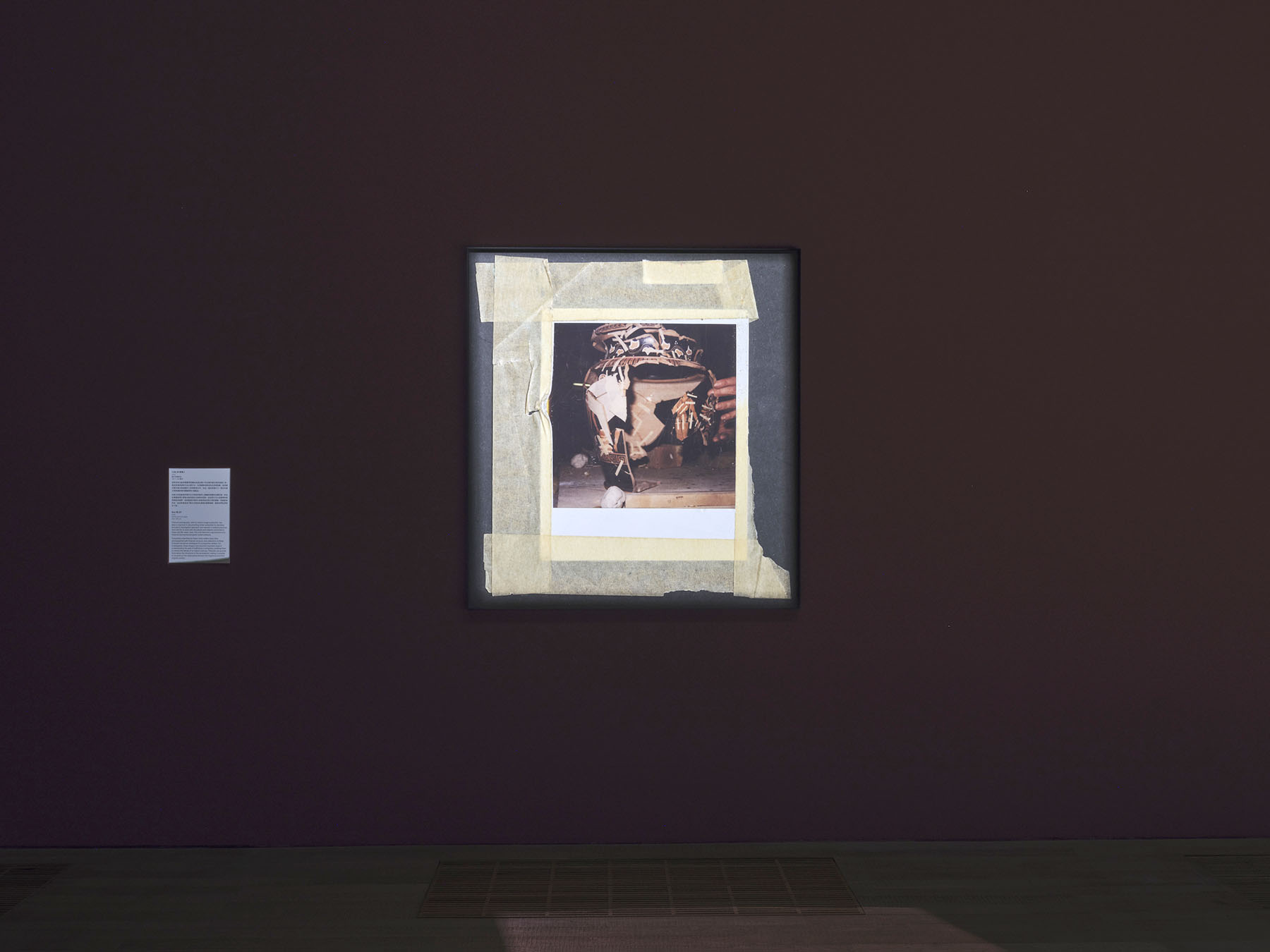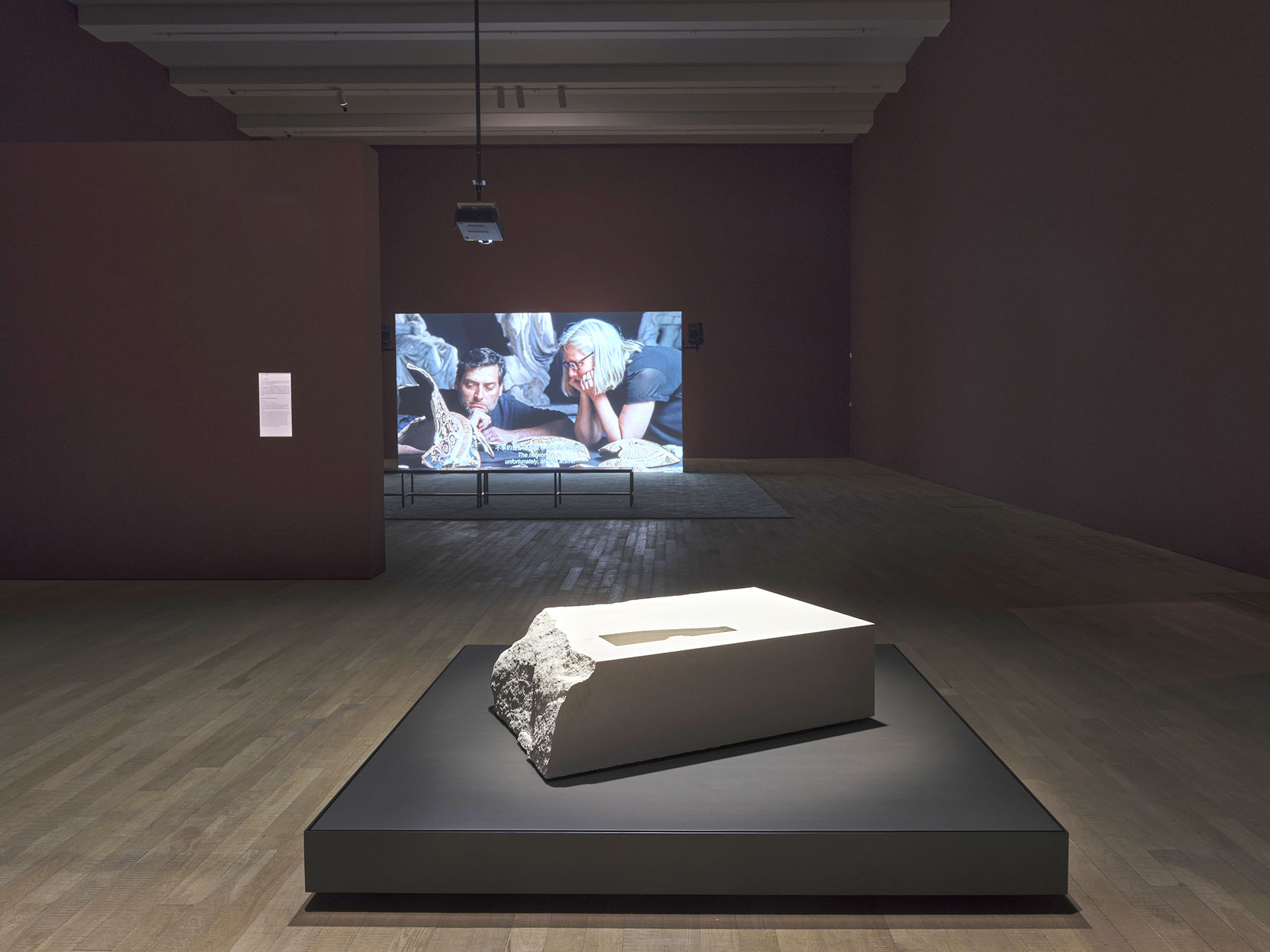
When we look at a painting, sculpture or historical artifact in a gallery or museum, most of the time we share a collective confidence in where the object came from. We know Michelangelo’s David was commissioned by the church in Florence during the Renaissance and then moved, with permission, to the Galleria dell’Accademia, where it stands today. A new exhibition at JC Contemporary in Tai Kwun, however, draws attention to the countless artifacts in museums worldwide whose provenance isn’t quite as clear and raises questions of cultural displacement.
“My great-grandfather was an archaeologist and architect based in Palestine for 20 years. Through him and also having lived in Palestine and Lebanon for some years, I became interested in the history of archaeology and how it’s entwined with the histories of colonialism,” says British artist Maeve Brennan, setting the scene for her eponymous show, Maeve Brennan: Records.
After moving back to London, Brennan continued to nurture her interest in the architectural relics of West Asia, especially “the global demand for these objects”. It is estimated that the illicit trade of cultural heritage items is the third-largest contraband market in the world, trailing only weapons and drugs.
READ MORE: Nostalgia rules
“We find ourselves at a moment in history where museums and institutions are reflecting on their collections and how they were formed,” Brennan says. “There are rampant debates around the repatriation and restitution of cultural objects, and this is the context within which this exhibition is framed.”
The artist’s first solo exhibition in Asia combines forensic investigation and storytelling through traditional art and film to interrogate how we consume physical history. She draws on science and existing documentation, collaborating with geologists and archaeologists — including forensic archaeologist Christos Tsirogiannis — aiming to upset the balance and challenge so-called “common knowledge” and dominant narratives by uncovering the hidden layers in the history of heritage trafficking.

Alongside sculpture and works on paper, Siticulosa (2025), commissioned for the Tai Kwun exhibition, is a companion to Brennan’s 2022 film An Excavation. The film gives both smugglers of precious artifacts as well as the people trying to stop them a voice. She traces a stolen object’s journey from the source until it lands in a private collection, exposing the network that supports the trade.
The films in the exhibition are complemented by Box 29_01 (2022), a reproduction of a Polaroid photograph discovered alongside looted objects in Italy, and Slow Photos (2023), a series of blank pictures. The seemingly harmless Polaroid represents a sinister side of the trade — stolen artifacts were usually documented by the perpetrators, a bit like proof-of-life pictures from hostage takings. Brennan says that the empty photos represent the “gaps and holes that open up where these objects are stolen from”.
ALSO READ: There’s a place for everyone
Though the focus of the films is an excavation in Puglia, Italy, Records has wider resonances, particularly in the light of the 2024 repatriation of several Cambodian sculptures from New York City’s Metropolitan Museum of Art. These were illegally trafficked in the ’70s, just one of dozens of instances of looted items going home in the last few years.
Records is part of a larger investigation Brennan has been working on since 2018. Called The Goods, the multidisciplinary project distills massive archives down to their essence in its examination of looted antiquities and the moral crossroads the world currently finds itself at. In making connections between objects, places and history, Records turns a spotlight on colonial violence, of which looting is an element, and invites viewers to consider issues of ownership and the ethics of preservation.
“People often think this is something from the past, that objects aren’t stolen and delivered to museums any longer,” says Brennan. “It’s still very much an issue.”
If you go
Maeve Brennan: Records
Dates: Through June 8
Venue: JC Contemporary, Tai Kwun, 10 Hollywood Road, Central
www.taikwun.hk



